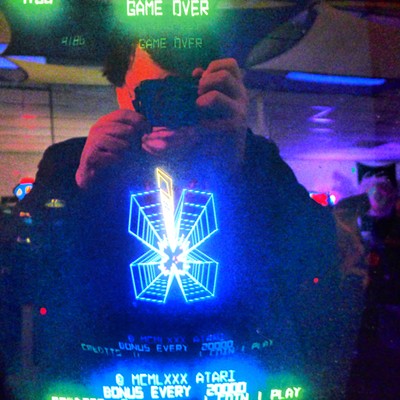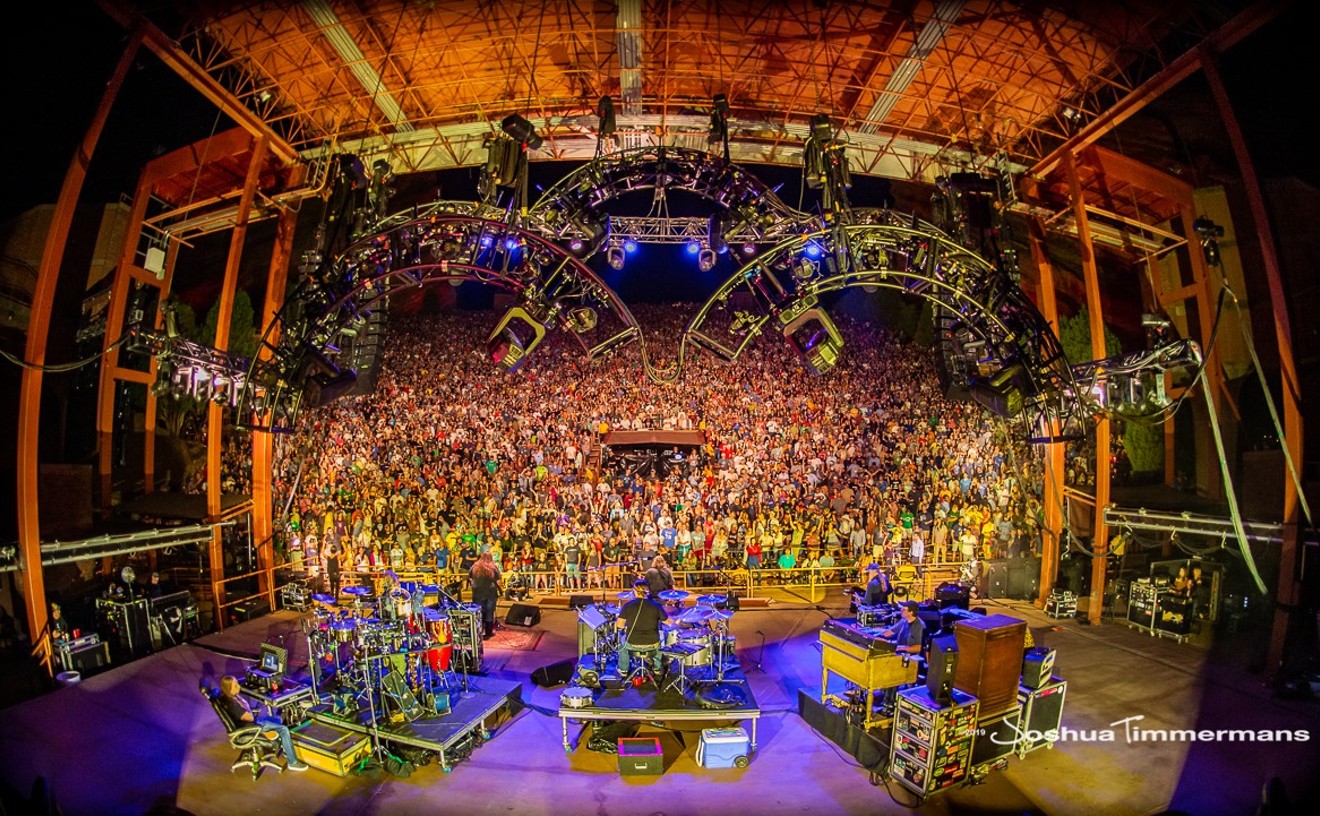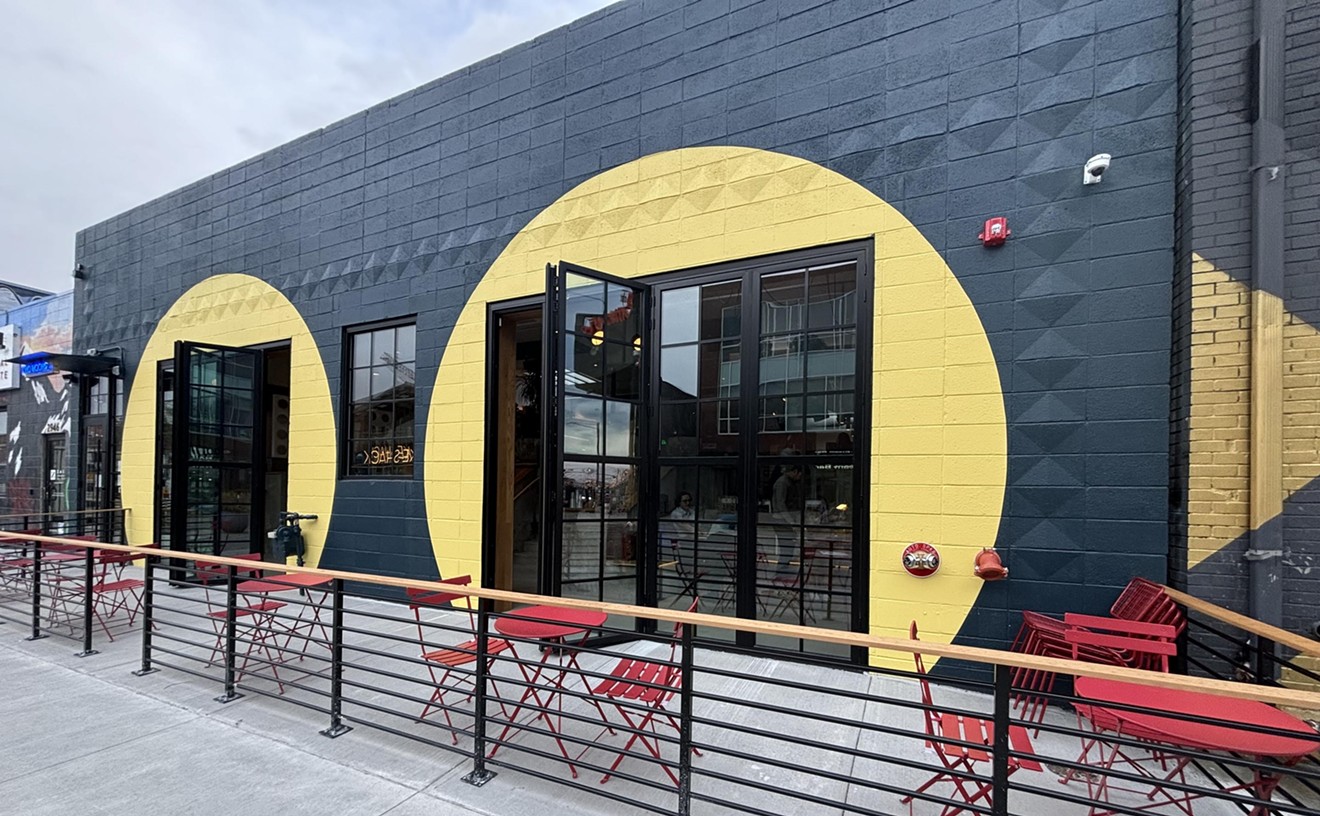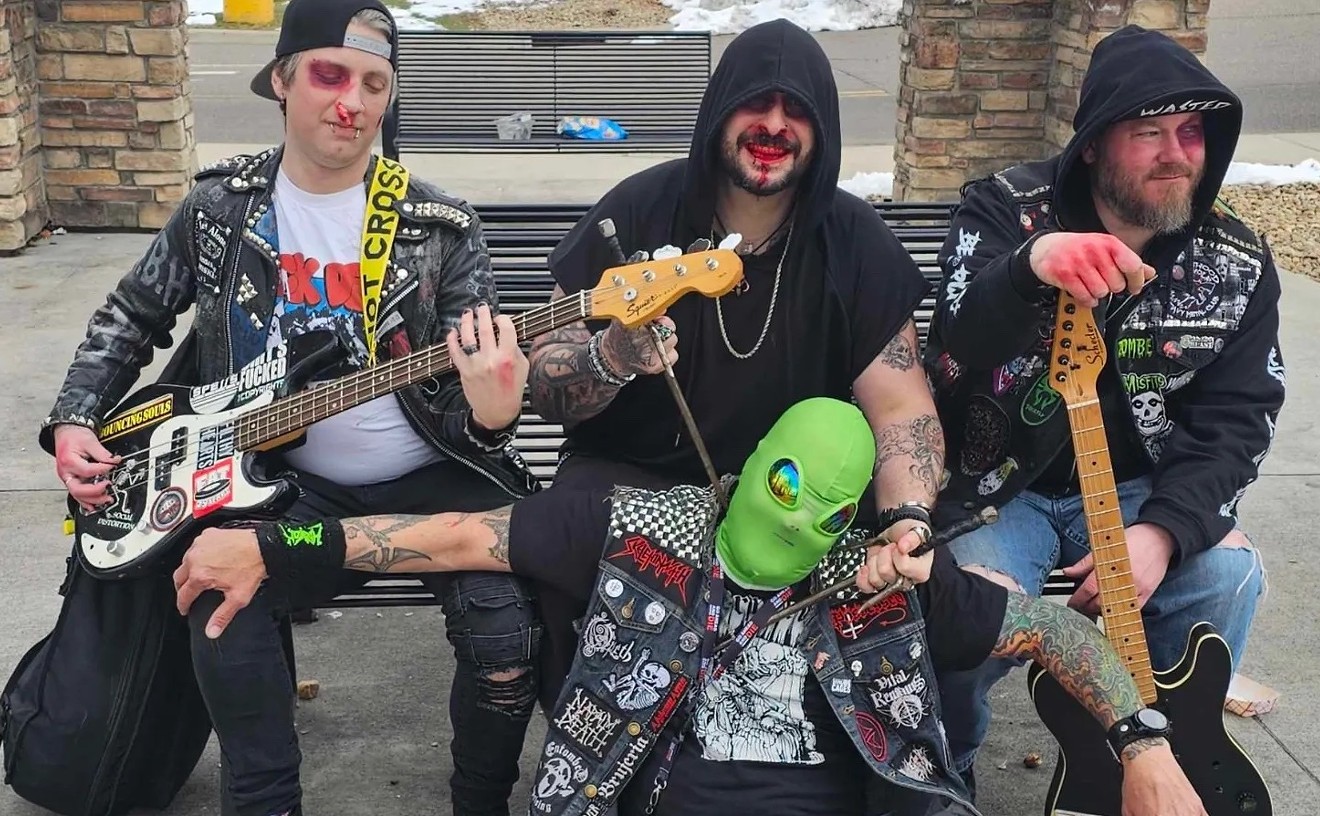Rhinoceropolis opened to the public with an art show the first week of May 2005. It was founded by Rocky Mountain College of Art + Design students Harry C. Walters and Jeremiah Teutsch and musicians/artists Milton Melvin Croissant III (aka “Buddy”) and Warren Bedell. The four had spent plenty of time at Monkey Mania, a DIY space that operated in Denver from late 1998 through early 2006.
They decided that they wanted to open a similar space, and started looking around the city. “I was calling people all the time, and every weekend for a month, I would get in my truck and drive around and call numbers and be blunt about what it was I was trying to rent,” says Croissant. Eventually he got in touch with Larry Burgess, whom he calls “the Monopoly man for that whole area. He now basically owns that whole neighborhood west of Brighton Boulevard.”
One of Burgess’s properties was a warehouse that had once been an art gallery called the Wheelbarrow. “We were all friends with Ryan Wheelbarrow and had gone to several shows there.” recalls Bedell. “He had vacated the warehouse for a full year, and there was a dude living there who was trying to do a wood shop or something like that. Buddy found the place, and Harry and Jeremiah were down to live there. Buddy just asked me, and it just made sense.
“That ruined my life,” he quips.
They decided on the name Rhinoceropolis with a vote. According to Teutsch, the contenders were Corporate Tiger, Rhinoceropolis and “the name of an old sports arena in town that I can’t remember.”
Teutsch and Walters moved out by May 2006, and their friend Travis Egedy, a fellow RMCAD student, moved in, further cementing the influence of visual art on Rhino. Still, music was always the biggest focus.
“[Bedell and Croissant] had done a lot of touring already,” says Egedy. “They had all the music contacts, and we started getting really good shows right away.” A June 2006 show featuring the Coughs (from Chicago) and Dynasty (from Rhode Island) was particularly memorable. “I thought that show was phenomenal,” says Bedell. “That was the night one of the dudes from Coughs knocked a ladder down onto one of my paintings. I calmed down and told him I knew it was an accident. Since then, the painting has been destroyed three times.”
“I had a life-changing moment,” says Egedy about the same show. “It was total chaos, anarchist assault music, and it blew my mind. I thought, ‘Music can be very powerful and have complete freedom.’ They played guitars with only one string and screamed and ran around. It changed my life, like, ‘Fuck everything — there’s no rules to anything.’ It just really opened up my mind.”
Rhinoceropolis was at its busiest from late 2006 until 2009, hosting a slew of well-known underground acts. “I booked this drawing show called Draw Rings in 2007; it was all works on paper, all drawings,” says Egedy. “Then Lightning Bolt played in there, and the room got so hot and sweaty and dripping with moisture, and all the drawings became soaked with human sweat. It was hilarious. Everything got...not ruined so much as just wet. Any other gallery? They would have freaked out. But that’s one of the things that made Rhino cool. It was a little crazier in there.”
That freedom proved infectious, and support for the venue soon started coming in unexpected ways. “Dan Deacon once came through and said, ‘Your P.A. sucks,’” says Croissant. “And he told us he got a guarantee of a thousand dollars for a show in Colorado Springs, at Colorado College, and he told us we should keep the money to buy a new P.A.”
Croissant, Bedell and Egedy were not the only people living at the space in those years; they were joined by a handful of other artists, including Brittany Gould of Married in Berdichev and Jane Roberts of Where Are the Big People. “I don’t think a woman had lived there before me,” says Gould. “Some people say my presence helped them. I don’t feel I was treated very differently, but I think sometimes I treated people differently, being a woman, and it was appreciated. I don’t think at that time there were a ton of girls playing music, but to me it didn’t feel like a barrier. Those boys were just about making interesting things and having fun, and I didn’t think it mattered.”
Bedell and Croissant moved out of the venue in 2010, and Egedy moved next door to Glob in 2011 before relocating to New York City in 2012. There were fewer shows at Rhinoceropolis in those years due to a slowing economy and a changing underground culture.
Chris Westin took over the lease when the old guard moved on and kept the venue running through that challenging time. Various people moved in and out of the space, including Colin Ward; John Gross; Darren Kulback and Kevin Wesley of noise-rock outfit Hot White; Katie Taylor, who now lives two doors down, at Club Scum, and co-fronts Future Single Mom; Frances Creegan; Zach Khan; and no-wave pop artist Sara Century. Trevor Yawner moved into Rhinoceropolis in 2012 and brought a number of garage-rock bands through. Ben Donehower, Yawner’s friend from school in Boulder, moved in in 2013.
John Gross took over the lease in 2013 and has kept things on an even keel ever since with the help of co-residents Donehower, David Castillo of Pizza Time and Panaderia, Eamonn Wilcox and Maya Briastre. “I hope that I’m able to find my place in the neighborhood and stay here,” says Gross. “I know there’s a lot of new people that don’t know what this place is about, and it may seem weird and intimidating, but it’s still a punk house. A lot of musicians live here, and we’re messy and we’re loud, but that’s why we came into this neighborhood.”
The River North area may be changing, but Rhino’s reputation in the underground music world is as solid as ever. “If I liked a band, I would send them a message and tell them that if they ever came through Denver, they could play at Rhino,” says Donehower. “They almost always knew what Rhino was. Almost everyone involved in this culture knows what Rhino is.”
[
{
"name": "Air - MediumRectangle - Inline Content - Mobile Display Size",
"component": "12017618",
"insertPoint": "2",
"requiredCountToDisplay": "2"
},{
"name": "Editor Picks",
"component": "17242653",
"insertPoint": "4",
"requiredCountToDisplay": "1"
},{
"name": "Inline Links",
"component": "18838239",
"insertPoint": "8th",
"startingPoint": 8,
"requiredCountToDisplay": "7",
"maxInsertions": 25
},{
"name": "Air - MediumRectangle - Combo - Inline Content",
"component": "17261320",
"insertPoint": "8th",
"startingPoint": 8,
"requiredCountToDisplay": "7",
"maxInsertions": 25
},{
"name": "Inline Links",
"component": "18838239",
"insertPoint": "8th",
"startingPoint": 12,
"requiredCountToDisplay": "11",
"maxInsertions": 25
},{
"name": "Air - Leaderboard Tower - Combo - Inline Content",
"component": "17261321",
"insertPoint": "8th",
"startingPoint": 12,
"requiredCountToDisplay": "11",
"maxInsertions": 25
}
]











